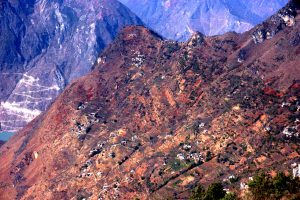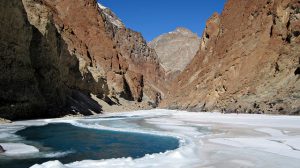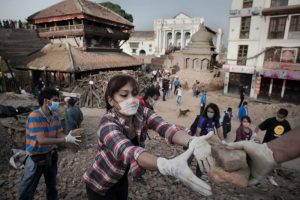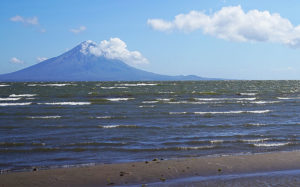China has rescued around 280 construction workers from a partially-built hydro project in Nepal that was badly damaged by a 7.8-magnitude earthquake that may have killed 10,000 people and has pulverised the Himalayan country’s infrastructure.
Amid scenes of almost complete devastation, Nepali rescue teams have struggled to reach the worst affected areas north-west of Kathmandu that have been cut off by severe landslides following the April 25 quake.
A report on state-run TV station CCTV said 280 Chinese construction workers at 110 MW Rasuwagadhi Hydropower project were reported to have been airlifted by helicopter, while 350 Nepali workers were said to have also been plucked from the rubble and brought to a nearby freight terminal close to the Chinese border.
Four Nepali and two Chinese workers at the hydro station were killed and several more injured, according to a separate report in this newsfeed from CCTV. (scroll down the newsfeed for Nepal story)
The plant is operated by China Three Gorges Corporation, the world’s largest hydro-electric company.
The dam suffered extensive damage, roads had been cut off and workers were running out of food and other supplies, according to a company statement and reports.
Two of Nepal’s largest hydroelectric facilities, 144-MW Kaligandaki power station and 22.1-MW Chilime hydropower plant, may also have been affected according to news reports from the area. However, officials will not know the extent of damage until they are able to conduct inspections in area that is still largely cut off.
The regional government of Tibet and the Chinese army are leading the rescue effort in Rasuwagadhi, about 67.5 kilometres from the quake epicentre. The dam is one of three in Nepal under construction by Three Gorges Corp.
This disaster follows fast after the Three Gorges Corporation got the green light from Nepal to build the US$1.6 billion 750 MW West Seti project earlier this month, the single biggest foreign investment in the Himalayan country.
One of the world’s poorest countries, Nepal has recently opened its hydropower sector to foreign investment to help ease chronic power shortages and grow an economy still emerging from a decade-long civil war.
Nepal has also recently signed deals with India to build 1,800 MW of hydropower —about triple the amount of electricity currently produced in the country.
Hundreds of large dams are planned or under construction across the wider Himalayan region in China, India, Pakistan and Bhutan. Countries have turned to hydropower as a supposedly green source of energy to meet bourgeoning demand in a region blighted by power shortages.
But experts have long warned of the danger against building large dams in the seismically unstable Himalayas, where the collapse of large infrastructure can magnify devastation in mountainous regions.
Dams were blamed for intensifying the destruction caused by the devastating landslide in the Himalayan state of Uttarkhand, northern India in 2013, and Japan’s Tohoku earthquake in 2011 led to a series of dam failures in Fukushima, and a partial meltdown of the region’s nuclear power station.
Some geologists even warn building large dams can increase the risks of earthquakes. Most controversially, some Chinese scientists say the weight of reservoir behind the Zipingpu dam triggered the 2008 Sichuan earthquake, which killed about 90,000 people.
An earlier version of this article was first published on chinadialogue’s sister site the www.thirdpole.net








